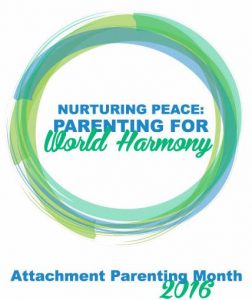 API hopes you have found AP Month 2016 to be enlightening and inspirational as we explored this year’s theme, “Nurturing Peace: Parenting for World Harmony.” On this last day of AP Month 2016, we bring you insight to what our children are internalizing as to what peace is:
API hopes you have found AP Month 2016 to be enlightening and inspirational as we explored this year’s theme, “Nurturing Peace: Parenting for World Harmony.” On this last day of AP Month 2016, we bring you insight to what our children are internalizing as to what peace is:
Emily, 8: “Calmness.”
Noemi, 8: “Peace means that everything is relaxing and calm.”
Emily, 10: “Quiet and relaxed.”
Violet, 10: “When people are calm, kind, peaceful, and respectful.”
Jacqueline, 7: “Love.”
Takumi, 7: “When I think of peace, I think of T.R.A.C.K.: Tolerance, Respect, Appreciate, Care, and Kindness. So if we have TRACK in heart, we can stay in peace.”
Zaiah, 10: “It is not war. It’s kindness. It’s being kind to each other. Peace is showing love to one another. Peace is having gratitude. Peace is love and gentleness.”
Remy, 14: “Peace to me means no child anywhere would know violence.”
Sophie, 5: “Peace means that I love my sisters.”
Rachel, 10: “Like not fighting, like what Martin Luther King, Jr., did with having people come together in peace, between different people. Like quietness and being calm.”
Thank you to Rachel, for suggesting this post for AP Month 2016. She is a 4th grader at Sandy Creek Public Schools in Clay County, Nebraska, USA. Contributions came from children around the world, thanks to the wide reach of the parents who volunteer with API.
Nathan, 5: “Not fighting. We should all work together as a team. No one, boy or girl, is better than another. We are all special.”
Camille, 18: “Peace is love, patience, truthfulness, kindness, and gentleness, and something we must achieve together.”
 Luke, 10: “Peace is not war. It is peace. It is being kind to one another. It is sticking together, staying together as the world.”
Luke, 10: “Peace is not war. It is peace. It is being kind to one another. It is sticking together, staying together as the world.”
Ethan, 8: “Happy and the only way people can get along.”
Alexandra, 11: “Peace is something that is almost impossible. There are always fights, problems, and stress. Big things like wars and small things like bickering always happen. But every once in a while, the world may have a minute of peace.”
Shelly, 11: “Everyone getting along and respecting one another.”
Daniel, 14: “All nations and religions will be tolerant of one another.”
Anna, 8: “Peace means to get along with everyone no matter what they look like.”
Juliana, 13: “Peace is everyone working together and no war. People helping people.”
Brook, 10: “It means not fighting and being kind.”
Bennett, 9: “Peace means no terrorism, no war, and no murder.”
Harrison, 11: “Harmony.”
Oliver, 9: “Peace means that the people get together and have a good time, and get through the bad times, and have a bright and sunny and peaceful world.”
Samantha, 13: “Peace is hard to explain since it has many interpretations and definitions, as well as having peace in many shapes and forms. However, the best way to explain it is when people learn respect, tranquility, simplicity, and equality within everything.”
Miranda, 9: “People getting along and the world being a happy place for everyone. Everybody is friends and doesn’t hate each other ever.”
Coby, 11: “When people aren’t angry and people are friends.”
Luke, 14: “Rather than fight each other, orcs and humans team up.”
Hiroto, 3: “Peace? I like peace. Mama, what’s a peace? I like peace. Yes, I accomplished!”







